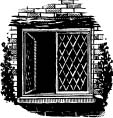Great Tales from English History, Book 2 (15 page)
Read Great Tales from English History, Book 2 Online
Authors: Robert Lacey
The very opposite proved the case — for the reign which began with such popular promise ended by inspiring a hostility to‘popery’
in England that is embedded to this day. It is still impossible for a British king or queen to be Roman Catholic or to marry
a Roman Catholic, and the roots of the bitter hatreds that divide Northern Ireland can be similarly traced back to the fires
of Smithfield. Stubborn, pious, Catholic Mary had helped make England a Protestant nation.
1557

R
OBERT RECORDE WAS A WELSHMAN
WHO studied at both Oxford and Cambridge in the reign of Henry VIII, before moving down to London to work as a doctor — he
was consulted, on occasion, by both Edward VI and Mary. But it is for his maths that he is remembered. In 1543 he published
The Ground of Arts,
the first ever maths book in English, which ran through over fifty editions and introduced English schoolchildren to the tortured
delights of such problems as: If a horse has four shoes, each with six nails, and you pay half a penny for the first nail,
one penny for the second, two for the third, four for the fourth, and so
on, doubling every time, how much will the shoeing of the horse cost?’
The modern historian Adam Hart-Davis has pointed out that there are, in fact, two answers to this problem:126 pence, if the
shoes are counted separately — that is, 4 lots of 6 nails — or 8,388,6075 pence (£34,952) if you continue the doubling process
as you move through all the shoes and nails.
In 1556, in
The Castle of Knowledge,
Recorde set out some of the revolutionary ideas of the Polish astronomer Nicolaus Copernicus who had died in 1543. After a
lifetime of studying the stars, Copernicus had come to the conclusion that the earth is
not
the centre of the universe, but moves around the sun, while also spinning on its own axis. Copernicus had been careful to
keep his heretical observations to himself in his lifetime — it was an article of Catholic faith that the heavens moved around
God’s earth — and Recorde, writing in the reign of Bloody Mary,exercised similar prudence:’I will let it pass till some other
time,’ he wrote.
But the innovation for which the Welshman is remembered today appeared the following year in his algebra book,
The Whetstone of Wit
(’The Intelligence Sharpener’). Until 1557, mathematicians had finished off a calculation by laboriously writing out the words‘…
is equal to…’, which was sometimes abbreviated to
ae
(or
oe
), from the Latin word for equal —
aequalis.
But Recorde had a better idea: why not use a symbol?‘To avoide the tedious repetition of these woords’, he proposed the use
of a pair of parallel lines: =.
Using the simple device that we now call‘the equals sign’ released an enormous logjam in the efficient handling of numbers,
and the implications extended far beyond pure maths. It immensely speeded up the calculations of astronomers and navigators
— even shopkeepers — and what could be more satisfying for everyone than to round off a calculation with two elegant little
parallel lines? As Recorde himself put it —‘noe two things can be moare equalle’.
1559

E
LIZABETH I WAS CROWNED IN WESTMINSTER
Abbey on 15 January 1559 — a date selected by her astrologer, Dr John Dee. Cheering crowds had lined the route as she set
off from the City of London the previous day, and the red-haired Queen had time for everyone, holding hands, cracking jokes
and watching with rapt attention the loyal pageants staged in her honour. When the figure of Truth approached her, carrying
a Bible, the twenty-five-year-old monarch kissed the holy book fervently and clasped it to her breast.
Flamboyant and theatrical, Elizabeth was very much her father’s daughter — with the dash and temper (as well as
the piercing dark eyes) of her mother Anne Boleyn. Tudor to the core, she was spiky, vain and bloody-minded, with the distrustfulness
of her grandfather Henry VII whose penny-pinching she also matched. At the receiving end of arbitrary power during her youth,
she had lived with rejection and danger and survived to boast about it.’I thank God,’ she told her Members of Parliament a
few years after she came to power, that I am endued with such qualities that if I were turned out of the Realm in my petticoat,
I were able to
live
in any place in Christendom.’
On the first day of her reign, the new Queen selected as her principal adviser William Cecil, her efficient estate manager
whom she liked to call her‘spirit’. In fact, this hardworking servant of the Crown was anything but airy-fairy — Cecil provided
ballast to the royal flightiness. At nine o’clock on the dot, three mornings a week, the dry little secretary summoned the
Council to plough through the detail of administration. One early reform was to call in the much-debased‘pink’ silver pennies
for re-minting: within two years the coinage was so well re-established that the government actually made a profit. Her reign
also saw the creation of England’s first stock exchange. And to build up the nation’s shipping capacity — as well as its seafarers
— it became compulsory in Elizabeth’s England to eat fish on Wednesdays and Saturdays.
But it was religion that was the priority after the trauma of Mary’s excesses. Traditionally minded, like her father, Elizabeth
favoured beautiful vestments, crucifixes and candlesticks, insisting there should be ceremony at the heart of Sunday worship.
Also like her father, she disliked the new
fangled Protestant notion of allowing the clergy to marry, and made clear her disapproval of their wives. England’s Catholics
were also reassured when she declined to reclaim her father’s title as Supreme Head of the Church. It was a subtle distinction,
but she settled for Supreme Governor.
For their part, Protestants were pleased to see the powerful rhythms of Cranmer’s Book of Common Prayer restored, and hear
again William Tyndale’s robust English ringing out when the gospel was read. Elizabeth offered both sides a compromise, and
she promised no trouble to those who would live and let live — she did not wish to make, in Francis Bacon’s words,‘windows
into men’s souls’. Elizabeth’s attempt at a tolerant middle way came to define a certain strand of Englishness.
One subject on which she disagreed, however, with virtually every man in England — including William Cecil — was on her need
to take a husband. It was inconceivable in the sixteenth century that a woman could lead a proper life, let alone run a country,
without a better half: in 1566, in a telling display of insubordination, Parliament threatened to refuse to levy taxes unless
the Queen took a husband. But Elizabeth was only too aware that if she married a foreign prince England would get embroiled
in European wars, while an English husband could not help but provoke domestic jealousies.‘I am already bound to a husband,’
she liked to say,’which is the kingdom of England.’
Thus came into being the powerful myth of Gloriana the Virgin Queen — bedecked in jewels and an endless succession of spectacular
dresses that took on the status of semi-sacred vestments. Homage to this stylised, white-faced icon
became compulsory — a draft proclamation of 1563 sought to insist that all portraits of Elizabeth had to be copied from one
approved template. When John Stubbs, an evangelical pamphleteer, dared to criticise the Queen’s marriage policy in 1579, he
was sentenced to have his writing hand chopped off with a cleaver/God save the Queen!’ he cried out after his right hand was
severed, raising his hat with his left.
This tyrannical, capricious monarch was the inspiration for the most glittering and creative court England has ever seen.
Every year Elizabeth would embark on her‘progresses’ — glorified summer holidays — in which the Queen, accompanied by her
court and by a veritable army of horses and carts, set off to cadge free hospitality from the great of the land in their magnificent
new windowed country houses.
Well before the end of the century, Elizabeth’s accession day, 17 November, had come to be celebrated as a national holiday.
Bells would be rung, toasts drunk, and poems composed in praise of the Faerie Queen who had made herself the embodiment of
a dynamic and thrusting nation. And if by the end of the century the physical reality of Elizabeth in her sixties, lined and
black-toothed, scarcely matched the idealised prints and portraits of the young monarch she once had been, people willingly
suspended disbelief.
In 1601 she received a deputation from the House of Commons, furious at the many abuses and shortcomings of her government
in these her declining years. But when, bewigged, bejewelled and beruffed, she responded to them directly yet again, they
fell willingly under her spell.’Though God has raised me high,’ she declaimed, in what became known as her‘Golden Speech’,‘yet
this I count the glory of my crown,
that I have reigned with your loves… Though you have had and may have many mightier and wiser princes sitting on this seat,
yet you never had nor shall have any that will love you better.’ The frail and fractious old lady was sixty-seven years old.
But to her listeners she remained Gloriana, and one by one they shuffled forward to kiss her hand.
1571

A
S YOU APPROACHED QUEEN ELIZABETH
’
S
London from the south you were confronted by a ghastly sight. Down from the stone gateway above London Bridge grimaced a
row of rotting and weathered skulls — the severed heads of traitors, some of them generations old. Every sixteenth-century
town had its hanging place, a purpose-built gallows or a tree where malefactors were executed and left to putrefy, dangling
there as a warning to others. There were several gallows in London. Twenty to thirty offenders were hanged every day the law
courts sat, reported one Swiss-German traveller in 1599, who was clearly rather impressed.
In a field to the west of London stood Tyburn Tree, the capital’s busiest hanging place — and hence a major venue for popular
entertainment, where rowdy crowds gathered and children, straining to get a glimpse, would be hoisted on to their parents’
shoulders to cheer and jeer. Food and drink stalls did a brisk trade in pies, fruit and sweetmeats at the spot that is marked
today by an iron plaque in the middle of the traffic island, near Speakers’ Corner, just across from the fast food and takeaway
shops of Marble Arch.
By 1571 the gallows traffic was such that a large wooden contraption had to be built on which as many as twenty-four bodies
could be strung at once. The executioner was a local butcher who would tie a rope round the criminal’s neck while he sat in
a cart. When the cart moved on, the victim was left dangling, and his friends ran forward to hang on his legs and try to hasten
his painful strangulation. In 1577 the topographer-chronologist William Harrison’s
Description of England
listed the hanging crimes as buggery, murder, manslaughter, treason, rape, felony, hawk-stealing, witchcraft, desertion in
the field of battle, highway robbery and the malicious letting-out of ponds.